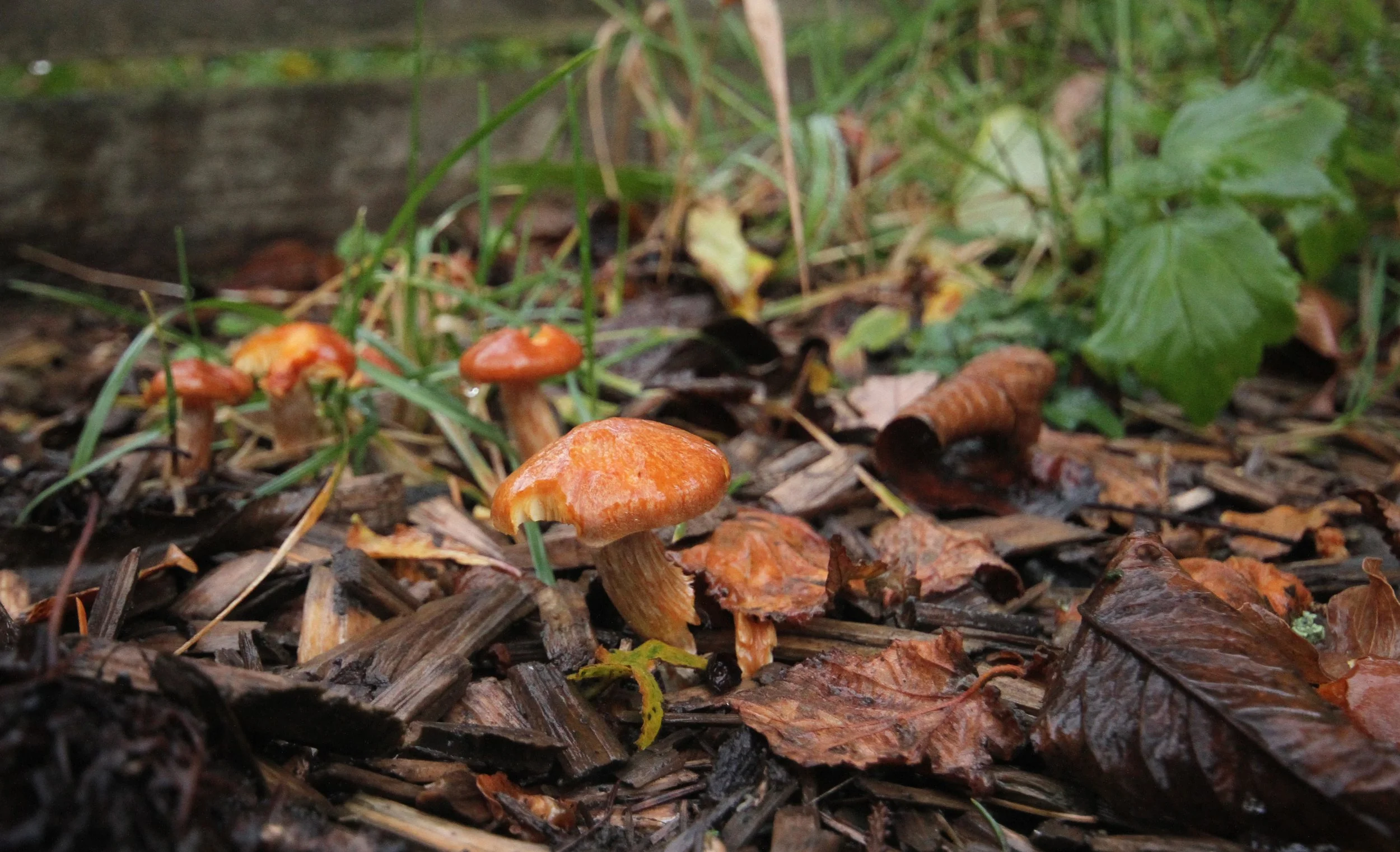Toxicity
By Daniel Butler, author and forager
Mushrooms have hit the international headlines in a big way. An Australian housewife, Erin Patterson, is in court charged with poisoning four members of her ex-husband’s family with a beef Wellington full of death caps. Her husband’s parents, Don and Gail Patterson, as well as Gail's sister, Heather Wilkinson and her husband, pastor Ian Wilkinson ended up being rushed to hospital. Only Ian survived – and that was after a two-week battle in intensive care.
This naturally leads to pondering about fungal toxicity. Most people – particularly those from Anglo Saxon and Celtic backgrounds – take the risks out of all proportion. Clearly you must always identify everything with certainty before you eat, but if you’re sensible there is really much less risk than most people imagine.
There are thousands of wild mushroom species in Britain (about 15,000 at the last count). About 2 – 300 are edible and around 50 are seriously poisonous, meaning that literally 99% of wild mushrooms are neither edible nor poisonous.
The death cap is responsible for 80% of mushroom fatalities around the globe
Photo: Nicola Jay Burgess
Even that gives a distorted toxicity picture however. Danish research into global mushroom fatalities determined just half a dozen species account for almost all deaths. These are the death cap (Amanita phaloides); destroying angel (Amanita virosa); false morel (Gyromitra esculenta) and the deadly and fool’s webcaps (Cortinarius rubellus and C. orellanus), with possibly the panther cap (Amanita pantherina) coming in at number six.
The death cap is much the worst culprit. It accounts for about 80% of fatalities around the world. It is extremely toxic, whether raw or cooked, and is also fairly common. Indeed, it has spread from its native home range of the temperate zones of the Northern Hemisphere to the Antipodes on the roots of European tree species. This gave Erin access to this non-native fungus.
Poisoning by death cap is characterized by a delay of six to 24 hours between ingestion and the onset of symptoms, during which time the cells of the liver and kidneys are attacked . . . The next stage is one of prolonged and violent vomiting and diarrhoea accompanied by severe abdominal pains, lasting for a day or more. Typically this is followed by an apparent recovery, when the victim may be released from hospital or think their ordeal over, but death results from kidney and liver failure within a few days.
Mushrooms, Roger Phillips
Deadly webcaps are responsible for Britain’s highest-profile poisoning
Photo: Author’s own
The destroying angel is less common, but just as toxic (survivor Richard Eshelman published a piece in The Guardian). This two webcaps are equally lethal. The fool’s webcap is fortunately rare, but the deadly webcap is responsible for the most famous British poisoning of recent times. Nicholas Evans, best-selling author of The Horse Whisperer, picked a basket of these on the west coast of Scotland. He fed these to his wife, brother- and sister-in-law. The four ended up intensive care for two weeks and while all survived, it was at a tremendous cost to their livers and kidneys (three required transplants).
The final pair of really dangerous mushrooms are the panther cap which contains huge quantities of muscimol and ibotenic acid, both powerful hallucinogens. Then there is the false morel which is delicious when thoroughly cooked, but deadly when raw.
Now there are plenty of other mushrooms which can kill you in theory, but fatalities outside the above are extremely rare. Most are so unpalatable one would never eat a fatal dose or the body’s own natural defences step in. For example, the false fairy ring (Clitocybe rivulosa) is so bitter that potential victims almost always spit them out or throw up before absorbing a fatal dose.
The brown roll rim is another very common mushroom which is generally labelled as ‘deadly’, but this is not strictly speaking true. Indeed, it used to be regarded as edible, particularly in Central Europe, but it can produce a cumulative negative reaction akin to anaphylaxis in susceptible individuals and it certainly can kill.
Uncooked honey fungus is mildly toxic
Photo: Author’s own
This same proviso goes for several species which are mildly toxic when raw: for example, honey fungus (Armillaria spp.) and blushers (Amanita rubescens) can make you unwell, but are excellent when cooked.
The yellow stainer (Agaricus xanthodermus) is the commonest source of ‘poisoning’ in Britain because it looks very like a cultivated mushroom (A. bisporus). It lives up to its name by bruising bright yellow and smelling strongly of carbolic or phenol. Again, it is not – strictly-speaking – poisonous and many people can eat it with impunity, but about half get a bad reaction, resulting in several hours in the loo. It is never fatal.
Overall, most of the 300-odd ‘poisonings’ that end up in A&E each year are nothing of the kind. The problems fall into three categories. The first is down to wild fungi growing in conditions which are anything but sterile. They are inevitably covered with invisible microbes which can cause dietary problems. Then there are individual reactions – every mushroom can disagree with someone. But the third category is down to over-indulgence.
Most wild fungi are actually very rich. This means they can be indigestible, particularly when people use them as if they were their cultivated relatives. They should be treated more as a herb or spice than a major ingredient – particularly on the first outing. It’s best to stick to modest quantities: about 50g per person is about right.


